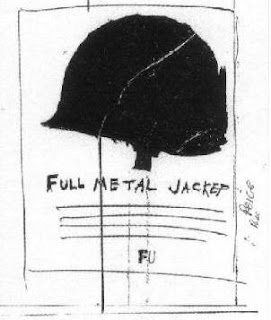 |
| Ready to move in |
 |
| Private Joker playing games with Animal Mother |
 |
| Trying to kill the sniper |
 |
For the final battle of Hue, 200 pine trees were imported from Spain and a few thousand tropical plastic plants were imported from Hong Kong. Plastic trees had previously been flown in from California, but upon seeing them, Stanley Kubrickreportedly said: "I don't like it. Get rid of it."
|
 |
| The gasworks town of Beckton (used for the climatic battle in Hue) was also used in the film 1984. Incidentally, some of the buildings seen were designed by a French architect who also worked in Hue. |
 |
Some scenes of the ruined city of Hue were shot at a dockyard on the Isle of Dogs, London, that was scheduled for demolition. The ruins of Hue in the sniper and final nighttime scenes were shot at the Beckton Gasworks in London's East End, which was also slated for demolition. In some shots there is a rock in the background that looks very much like the monolith from Stanley Kubrick's 2001: A Space Odyssey. Kubrick said it wasn't intentional, but only noticed while watching the rushes. Beckton Gas Works was used a year before for the movie Biggles: Adventures in Time.
|
 | |
|
 |
| Show me your war face |
 |
Stanley Kubrick was well known for having a very small crew on set. On one occasion, after the electrician finished lighting a set, Kubrick told him, "Okay, this is how I want the scene lit and I'm not going to change it." Kubrick then sent the man to fix some wiring in his house.
|
 |
Michael Herr, a very close friend of Stanley Kubrick, helped write much of the screenplay, particularly the part set in Vietnam. His contributions to the script are based largely on his own experiences as a reporter covering the war. Like Joker and Rafterman he was essentially freelance and allowed to travel anywhere in the country. Additionally, the scene where Joker and Rafterman watch the crazed gunner in the chopper machine-gun civilians is taken directly from "Dispatches", Herr's memoir of his experiences.
|
























































